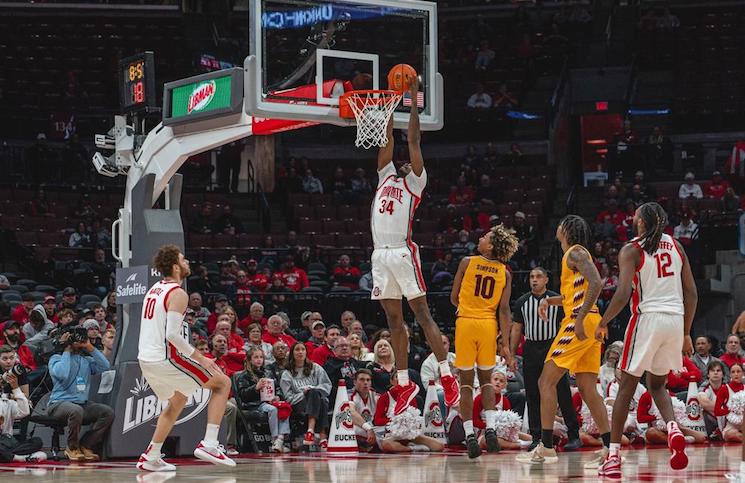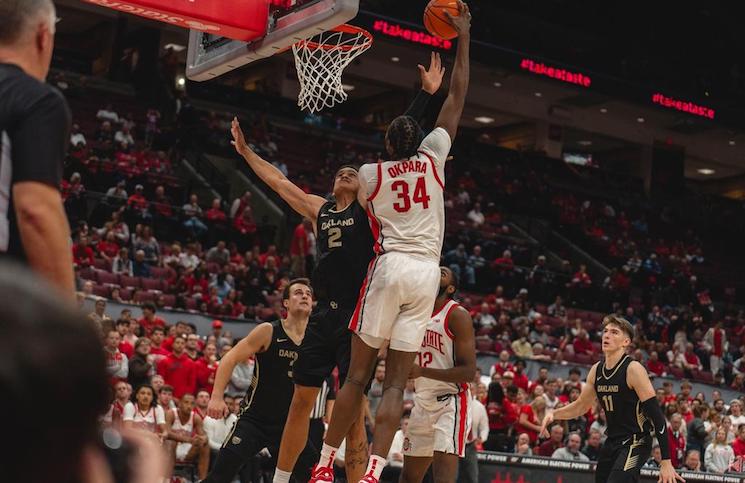It’s never as simple as to say “only one thing cost a team a game.” But you’ve heard it said many times, and I tend to agree, that the coaching was sub-par on Saturday as the Vols blew a late 13-point lead in The Swamp on Saturday and lost to Florida 28-27 to extend the Gators’ 11-game winning streak in the series.
I want to unpack the statement that the coaches didn’t do their job well by looking at specific examples. Some of these errors are more egregious than others, and I obviously have the benefit of hindsight and film study after the game to be able to look into the situations closer without time restrictions faced during the game. But none-the-less, high-level, well-paid SEC coaches have to make tough choices under fire all the time and the small decisions are a primary factor in winning and losing close games.
Here are what I’m considering the seven deadly coaching sins from Saturday afternoon for the Vols:
1. Not going for two when taking the 26-14 lead in the fourth quarter
This one has been discussed time and time again since the game, and it’s probably the worst of the them all. With 10:19 remaining in the game, the Vols go up 26-14 after a punishing drive finished off with a Jalen Hurd 10-yard touchdown run on third and goal from the 10. CBS cameras catch Jones emphatically putting one finger up, perhaps to clarify the confusion of those on the sideline who were assuming the Vols would go for two to try to get the 14-point lead.
Some of these critiques involved a fair amount of hindsight, but this one didn’t. Virtually everybody in the press box around me was asking why they weren’t going for two. We tweeted that it was an “interesting” decision at the time and a majority of responses came in saying they disagreed with the decision. Jones said the decision was based on a chart, but common sense says at this point, the odds of Florida getting three possessions, scoring a touchdown and kicking two field goals for the wins are significantly lower than the Gators scoring two touchdowns and taking the lead. The reward of a potential 14-point lead far outweighed the risk of a 12-point lead, and that’s why this, regardless of the coming outcome, was a poor decision.
2. Blunders on the final offensive drive
Down one, Tennessee takes over at its own 32 with 1:21 remaining and two timeouts left. On the first play, Dobbs throws a first-down pass to Ethan Wolf, the play was over at 1:17 (refs stop clock to check for measurement, but the officials did waste about 10-11 seconds before they did that). Despite that, the Vols are in formation until the :56 second mark, when Kyler Kerbyson can’t hold his stance anymore and gets the false start (Vols take a timeout to avoid the 10-second run off). That’s a costly combination of mistakes that cost the Vols 21 total seconds, a timeout and five yards. Sure, some of that goes on Kerbyson for flinching and the refs were slow to stop the clock, but the 21 seconds to get the call in and off is still a bad look there. I know it was a frantic time as well, but coaches have to see the clock running, get the attention of the ref and demand that they not only stop it, but look at it to get the correct time on the clock.
Dobbs follows that with a beautiful throw and catch to the Florida 43 to Alvin Kamara. The clock stops at :50 to move the chains. It then takes 10 seconds after the chains are set to get the next play off (:40). Dobbs pulls a Houdini, gets out of the pocket, runs to the 37, fumbles out of bounds there. The clock stops at 29 seconds after the ball rolls out of bounds, but will restart on the whistle (because Dobbs initially fumbled the ball in bounds and the play goes back to where he fumbled it). I’m not sure if UT realized the clock would restart here.
The Vols don’t get the snap off until :17 remaining on a 2nd & 2. If 12 seconds are going to elapse there, you have to think about spiking it or using the last timeout (remember, Butch was fine to use the timeout just a second ago to preserve a 10-second runoff). Regardless, the snap goes off with :17 left, Dobbs hits Wolf on a quick route to the sideline for a few seconds with :10 remaining at about the 32.
Here’s where mass confusion sets in, and there’s a lot that isn’t clear from this point going forward.
Wolf gets out of bounds and the official waves his arms to stop the clock. It’s not clear if he’s doing that because Wolf got the first down or because he went out of bounds on his own accord. There’s a big difference. If he only got the first down, but was forced out, then the clock will start once the ball is set and the chains are moved. If he went out of bounds on his own, the clock is stopped until the snap. It looks like Jones is trying to get an explanation, but either doesn’t get one or doesn’t respond fast enough to it. Jones mentioned some confusing communication at the end with the officials and this may have been partially what he was referring to.
The Vols seem unprepared to snap the ball and the clock starts ticking. Out of nowhere, seldom-used H-back/fullback Joe Stocstill sprints on the field (maybe thinking incorrectly they were kicking a field goal or his formation had been called). The Vols have to wait until he runs off the field to take the snap at this point, leaving just three seconds on the clock.
Here’s where some questionable officiating comes in as well. Tennessee did temporarily have 12 men on the field, but never broke the huddle with 12, nor did they have 12 in the formation nor 12 actually on the field at the snap.
The refs throw the flag anyhow for an illegal substitution. That might be the correct call, I’ll admit to not knowing exactly the interpretation of the rule in that exact situation. The 10-second runoff doesn’t mean much because the Vols still have a timeout to wipe that off (at this point that timeout couldn’t have been used in any other clock-helpful way because there were only three seconds remaining, not enough time to run another play). But the five yards hurt more, backing up the field goal to about 55 yards.
All that to say, there’s a fair amount of debate about the division of blame between players and coaches in a situation like this. Stockstill did, indeed, run on the field, really messing this situation up, but surely he had somebody on the staff say something that indicated he should’ve been on the field, correct? It seems improbable that a seldom-used player would just sprint on the field for no reason. I asked Jones about this on Monday, and he said the situation “had been addressed” but didn’t go into further detail.
In the end, the Vols should’ve kept the same personnel on the field after Wolf’s reception, been on the ball when it was set and spiked it immediately with seven or eight seconds remaining, giving the option to run one more play to make the field goal more makeable. There’s no way to know if Medley would’ve made a closer kick, but the coaches’ job is to put the players in the best position possible to succeed. That didn’t seem to happen this drive.
3. Playing too conservatively on offense on the second-to-last drive
Again, let’s talk risk/reward in this situation. Tennessee, holding a six-point lead, has a first and 10 from its own 15, 4:06 remaining and Florida has two timeouts left. Regardless of what happens on this drive, Florida is going to get the ball back with time to score unless Tennessee gets a first down.
Despite that, the Vols go very conservative here, emulating what happened in the Oklahoma game. With the Gators stacking the box, Tennessee runs three times and ends up with zero net yards on the possession.
The Vols accomplished very little on this drive. After getting the ball with 4:06 on the clock, they only force Florida to use one timeout and then snap the ball to punt with 2:35 remaining. A team taking over close to midfield, with a timeout and that much time remaining has every opportunity to score, which Florida would soon prove.
4. The defensive strategy on fourth downs in the fourth quarter
Tennessee had some success early in the game stopping Florida on long-yardage situations by rushing three and spying one. But the Vols ran out of luck with this formula late and didn’t make the adjustment.
These are the three fourth-down situations that Florida was able to convert in the fourth quarter:
6:23: 4th & 7
4:38: 4th & 8
1:39: 4th & 14
Tennessee used the same defensive-front look each time, that three-man rush with Chris Weatherd spying on each occasion. Again, think about the overall context of the situation. Yes, Will Grier has some athleticism, but his biggest run of the day was 12 yards and by that final instance, Grier was limping, grabbing his arm and beat up overall. The odds of him running for the first, especially on fourth and 14, seem very low. The Vols had tremendous success bringing pressure and putting the onus on Grier to make the play under duress earlier in the game, but didn’t try that approach on any of these fourth downs.
5. Starting Colton Jumper at middle linebacker
For whatever reason, the staff has been persistent in giving sophomore linebacker Colton Jumper every opportunity to play at middle linebacker. After losing the job against Western Carolina, Butch Jones decided to put Jumper back in the starting lineup against the Gators, and while it’s unfair to say it was only his fault, he clearly got exposed on Florida’s early touchdown drive.
#Vols trail 7-0 after a long Taylor run sets up a Gator TD. https://t.co/EBOev38nKH
— Rocky Top Insider (@rockytopinsider) September 26, 2015
The Vols went back to Darrin Kirkland Jr. at middle linebacker for the most part after that, and it seemed to work out better for the Vols. Not before the Gators got spotted seven early points in this one though. Jones said on Monday that his rationale was to “ease” Kirkland into the game, but it seems more logical just to put your best players on the field and let them play.
6. Calling timeouts when Florida was about to kick
With 6:12 remaining in the third, Florida’s backup kicker Jorge Powell is on the field to attempt his first career field goal from 42 yards out as the Vols hold a 20-7 edge. This is, at best, a low-percentage play from Florida and even if he makes it, giving up a field goal after Florida got possession in your territory on this drive is something the Vols should gladly be able to live with.
Jones, instead, calls a timeout as Florida is lining up to kick. After the game, Jones said he was thinking Florida was going to fake it, and I think that rationale makes sense to an extent. But why give Florida, and its offensively-minded head coach time to think about this decision, draw up a play and send the offense back out there? Instead, coaches should have a signal for “field-goal block safe” giving the defense the heads up to hold off on the hard rush and watch for a fake. The Vols practice special teams all the time, and that has to be an adjustment that can be made with just a hand signal – no timeout needed. Let the Gators run their play, either a low-percentage field goal or a low-percentage fake against your “safe” defense. Save the timeout and get off the field either up 20-7 or 20-10. The Gators, do, indeed, think it over after the timeout, convert and go down to score a touchdown on that drive instead.
Jones did it twice in the game, also taking Florida’s punt team off the field at another point and giving the Gators the chance to do the same thing at that point.
7. Declining penalties that could’ve helped the Vols
I mentioned at the top that some of these involved some hindsight, and this one might be the best example of that. At least once, Jones declined a penalty against the Gators that came back to hurt the Vols.
With :21 seconds remaining in the first quarter, the Gators get three yards, up to their own 9-yard line to set up 2nd-and-7. The Gators are called for a chop block behind the line of scrimmage and would’ve been moved back half the distance from the spot if the penalty were accepted. It looks like that would’ve put them around their own 2 or 3-yard line with approximately a 1st and 13, way backed up. And as the first quarter elapses, they would’ve been backed up close to Tennessee’s section of fans after switching side of the field. Sure enough, the Gators get six yards the next play and two yards the next, getting a first down they may not have gotten otherwise. Obviously there’s the benefit of hindsight when evaluating that decision by Jones, but it appeared to be the wrong one there.
He made a similar decision on an illegal formation later in the game. Tennessee gave up a play after that thought that would’ve been a first down in either scenario, so it’s fair to call that one a wash.




